Article written by Elisa - Travel Writer & Local in France
This article may contain compensated links. Please read disclaimer for more info.
Visit the Calanques National Park (Les Calanques de Cassis – Marseille)
09/05/2024About the Parc National des Calanques
The Calanques National Park is the 10th national park in France. It is the only national park in Europe that is at the same time terrestrial, marine, and periurban.
This natural area located between the communes of Marseille, Cassis, and La Ciotat, in the French region of Provence-Alpes-Côte d’Azur, includes a series of inlets, forest, and a vast marine area of the Mediterranean Sea, with several islands and one of the richest submarine canyons in the world.
Nature passionates will definitely love Les Calanques de Cassis – Marseille. Located in one of France’s aridest and windy areas, the Parc National des Calanques offers spectacular landscapes, rich flora and fauna, and endless outdoor activities.

What are the Calanques?
Calanque is a French word that describes a narrow, steep-walled inlet in limestone, dolomite, or other carbonate strata found along the Mediterranean coast. A calanque is not the same as a crique (creek): a calanque is when the sea steps into the land, while a crique is a narrow beach at the foot of a cliff.
There are many calanques between Marseille and Cassis, each one with its own character and beautiful in its own way. Here’s the list of all the calanques which are part of the Massif des Calanques, from west to east.
Calanques de Marseille
- La Mounine
- Marseilleveire
- Les Queyrons
- Podestat
- L’Escu
- Cortiou – La Verrue
- Sormiou
- Triperie
Calanques de Cassis
- Morgiou
- Sugiton
- L’Oeil de Verre
- Devenson
- L’Eissadon
- L’Oule
- En-Vau
- Port-Pin
- Port-Miou
- Mugel
- Figueroles
Where to Stay near the Calanques Marseille – Cassis
1. Marseille
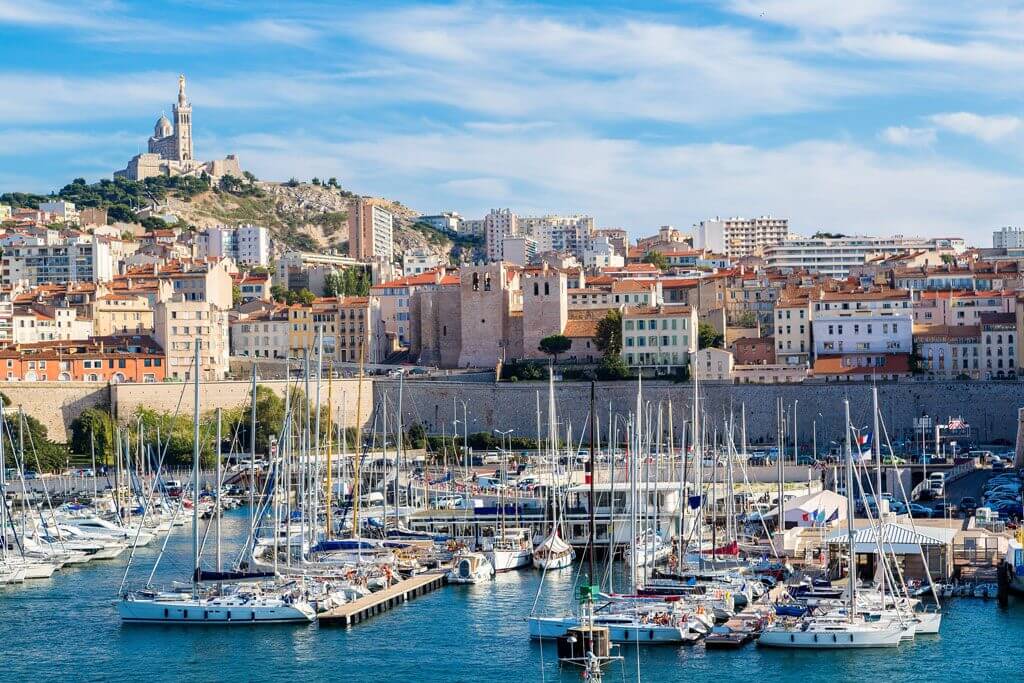
Since its 2013 stint as the European Capital of Culture, France’s second-biggest city has changed a lot. Once known mainly for its port, Marseille is today a cultured city with an edge, with the sun, good food & wine, and a great cultural scene.
What to do in Marseille? Don’t miss Notre-Dame-de-la-Garde Basilica, topped by a golden Virgin Mary and Child, the Old Port, and the traditional neighborhood of Le Panier. Le MuCEM (Museum of European Mediterranian Civilizations) is a must, but there are other interesting museums about the city’s history and traditions.
For a unique stay in Marseille, book at Hotel la Résidence du Vieux Port. With the perfect location right on the Old Port banks and the perfect view, this charming hotel is the ideal base to explore Marseille – Click here to book your stay at Hotel du Vieux Port
Other good hotels in Marseille are:
- Sofitel Marseille Vieux Port – luxury
- Alex Hotel & Spa – mid-range
- Le Petit Nice – Passedat – luxury
- Les Appartements du Vieux Port – furnished apartments
2. Cassis

This cute fishing village, so typical of Provence, is the perfect place for a weekend of ‘far niente’ by the Mediterranean Sea. For us, Cassis is usually the finish point of our hikes in the Calanques, usually celebrated with a cold beer on one of the terraces overlooking the port.
Cassis also produces wines, mostly whites. The Cassis vineyard has the merit to exist since the arrival of the Greeks on the French territory, that is about 2600 years ago!
For a unique stay in Cassis, book at Hotel Les Roches Blanches Cassis. The hotel’s location is magical, and it offers a seasonal outdoor swimming pool and a restaurant – Click here to book your stay at Hotel Les Roches Blanches
Other good hotels in Cassis are:
Les Calanques de Cassis – Marseille – Things to Do
1. Sightseeing
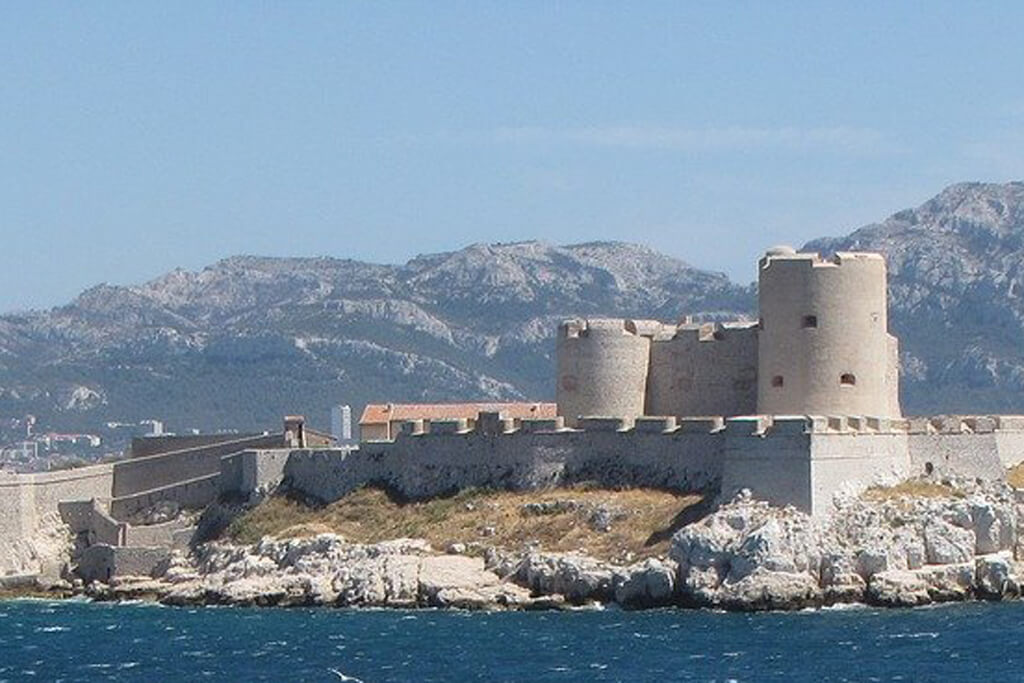
2. Amazing Hikes
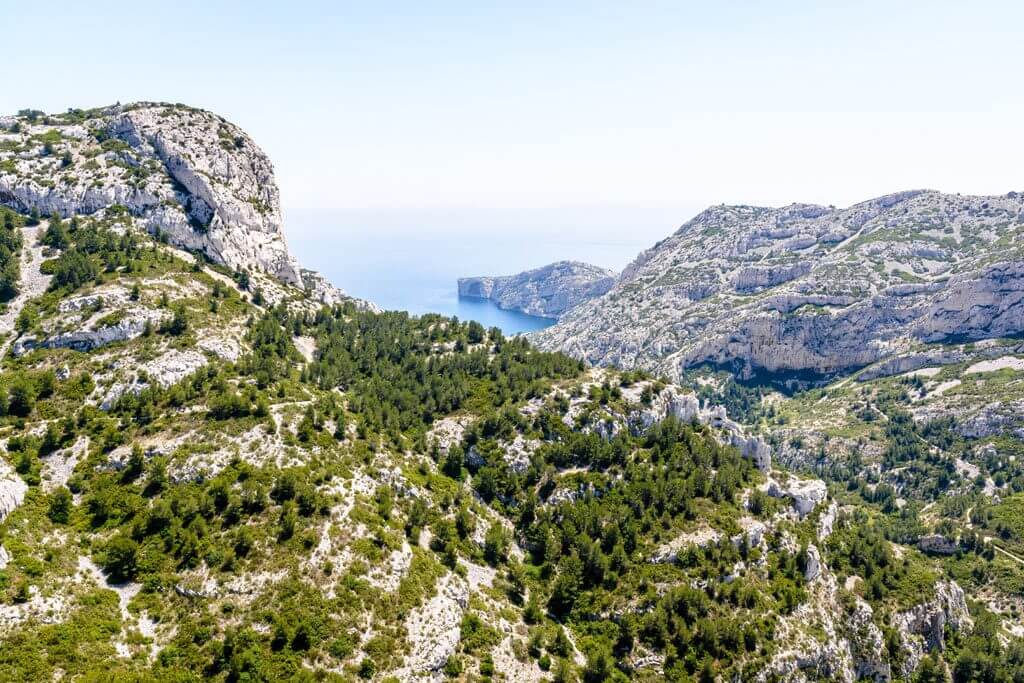
This is definitely our favorite way to explore the Calanques Marseille – Cassis. The Massif des Calanques offers hikers wild landscapes, fabulous views, plus the possibility of a swim in crystal clear waters from calanque to calanque. Two GRs (Grande Randonnée) cross the Calanques National Park: GR 51 and GR 98.
The GR 98 starts from the Calanque de Callelongue and connects Marseille to Cassis in around an 11-hour walk. This trail is ideal to admire the calanques close to the sea.
The GR 51 is nicknamed the Balcony of the Mediterranean. This is a 436 km trail that connects Menton (Alpes Maritimes) to La Madrague (Bouches-du-Rhône), and it is ideal for exploring the calanques from above.
Of course, there are other possibilities for various length hikes, and they are all well marked. The hikes along the calanques are generally long (around 20 km) and with positive and negative slopes of 1,000 m. But the effort is well worth it! This 6-km hike from Cassis with a local guide covers three of the most beautiful Calanques on foot, with time for a bath in an idyllic setting.
3. Boat Tours
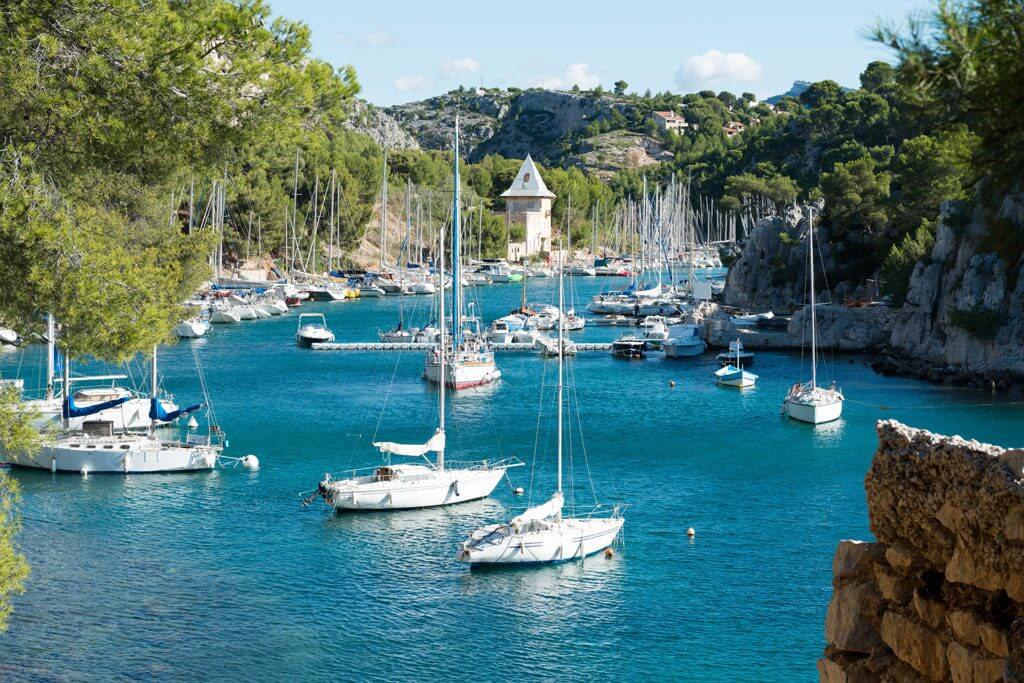
If hiking is not your thing, but you don’t want to miss the beauty of the Calanques National Park, jump on a sailboat or a catamaran, and explore this fantastic area from the water. This is the most popular way to visit the calanques, especially the most-secluded ones.
During the summer, calanques boat tours leave from Marseille or Cassis daily. There are half-day boat tours (morning or afternoon) and full-day boat tours.
Day tours from Marseille usually include lunch and stops in some of the most beautiful calanques, with time enough for a bath and snorkeling. If you are a wine lover, go for the Calanques boat tour + wine tasting with typical French tapas and Provençal wines.
Half-day tours from the port of Cassis are very popular. During the high season, there are departures every hour, and the price and duration of the tour depends on the number of calanques visited.
And why not organize your own tour with your favorite stops?
- Rent a boat with or without a skipper from the port of Marseille
- Rent a boat with or without a skipper from the port of Cassis
4. Kayak Tours and Standup Paddle
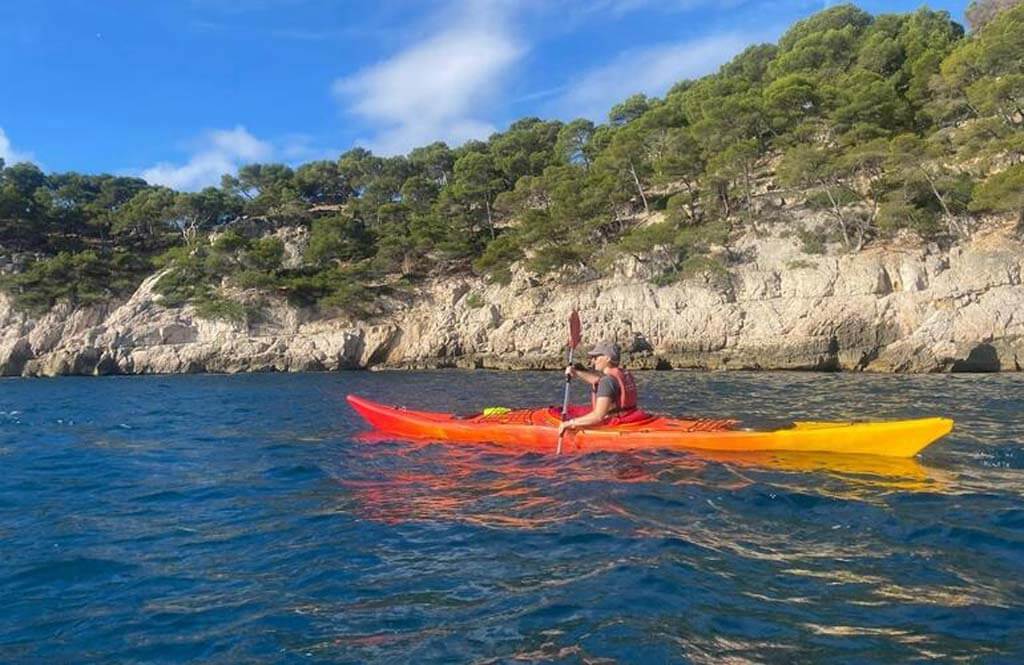
Now, it is also possible to do sea kayaking in the Calanques. The departure of this half-day excursion is from Cassis, and you can have your kayak or share it with a friend. If you prefer to explore the Cassis calanques alone, you can rent a kayak in the Plage de l’Arène in Cassis.
If you are staying in Marseille, take this calanques full-day kayak tour. With more time available, you will have some breaks to allow you to take full advantage of the viewpoints and even swim.
Explore the Mediterranean fishing port of Cassis on a guided standup paddleboarding tour. Start in sheltered waters at Port-Miou, encounter marine life, and enter the stunning Calanques National Park.
5. Spectacular Dives
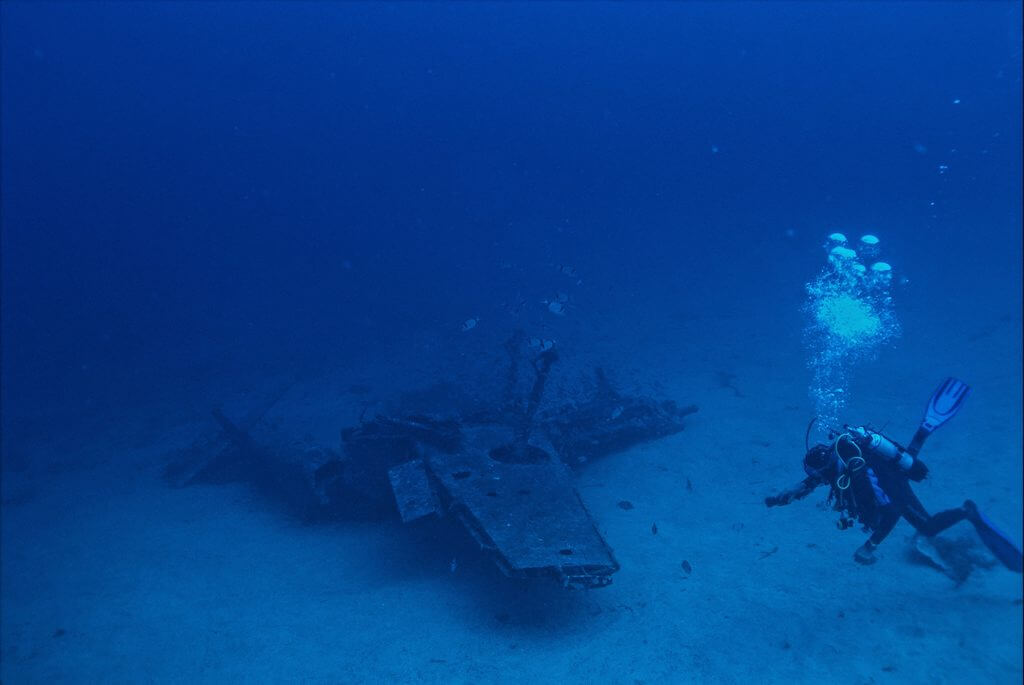
Marine life is one of the main highlights of the Parc National des Calanques. The area is home to no less than 60 marine heritage species!
Furthermore, the Canyon de la Cassidaigne is one of the richest underwater canyons of the Mediterranean Sea in terms of biodiversity!
Also, there are some wrecks in front of the Marseille coast waiting to be explored. The Messerschmitt Bf 109 wreck is the most famous one – Click here to book a half-day of scuba diving or snorkeling
6. Rock Climbing
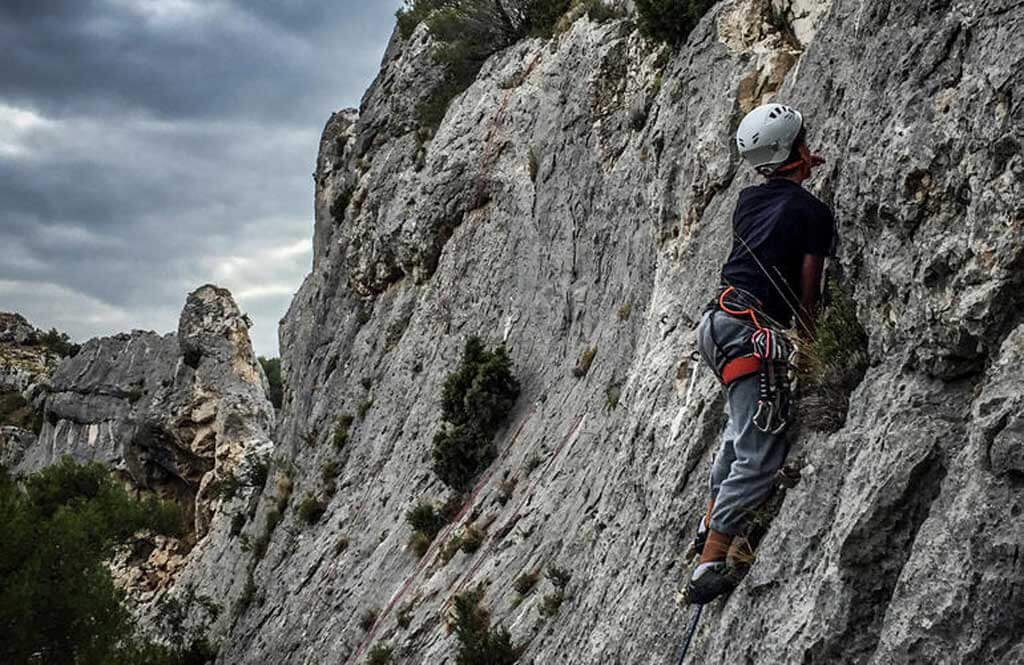
Les Calanques de Marseille – Cassis is also a unique climbing site thanks to the karstic relief of the Massif des Calanques. Indeed, climbing is one of the favorite sports practiced in the Calanques National Park.
Don’t do this without a local instructor who knows the area well! After having been trained by an instructor on the basic techniques of climbing, the techniques of progression on rock, and the handling of ropes, you will leave to the ascent of the calanques.
If you are staying in Marseille, book this climbing discovery session in the Calanques of Marseille (half-day or full-day tour). Whether you are a beginner or an expert, the diversity of the climbing sites in the calanques allows us to offer you sectors adapted to your physical and technical level.
If you are staying in Cassis, take this guided climbing tour to discover the Calendal climbing site. This tour lasts 6 hours and includes all the equipment and an expert guide.
Best Calanques in the Massif des Calanques National Park
Les Calanques de Cassis – Marseille is one of the best day trips from Marseille or Cassis. If you have a spare day during your holidays in this part of France, visit one of these calanques here below, they are the best!
Calanque de Sugiton
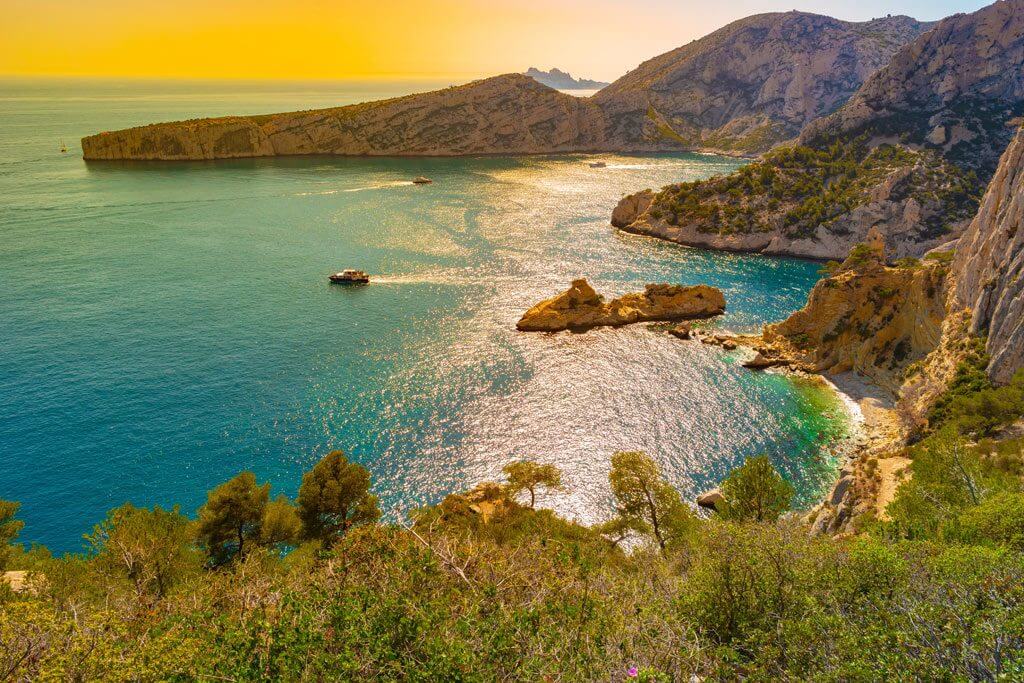
The Calanque de Sugiton has a beautiful setting, surrounded by high cliffs. This Calanque is composed of two creeks with a pebble beach. In front of Sugiton, there’s a small island named Le Tourpillon (Torpedo) due to its shape.
Sugiton is the easiest calanque to reach from Marseille by public transportation. To get there, take bus #21 from Avenue du Prado, at Castellane, in the direction of Luminy, and get off at the terminus. From there, follow the walking path (around a 45-minute walk downhill, a bit more uphill). Alternatively, it is possible to reach Sugiton by boat.
Calanque d’En Vau
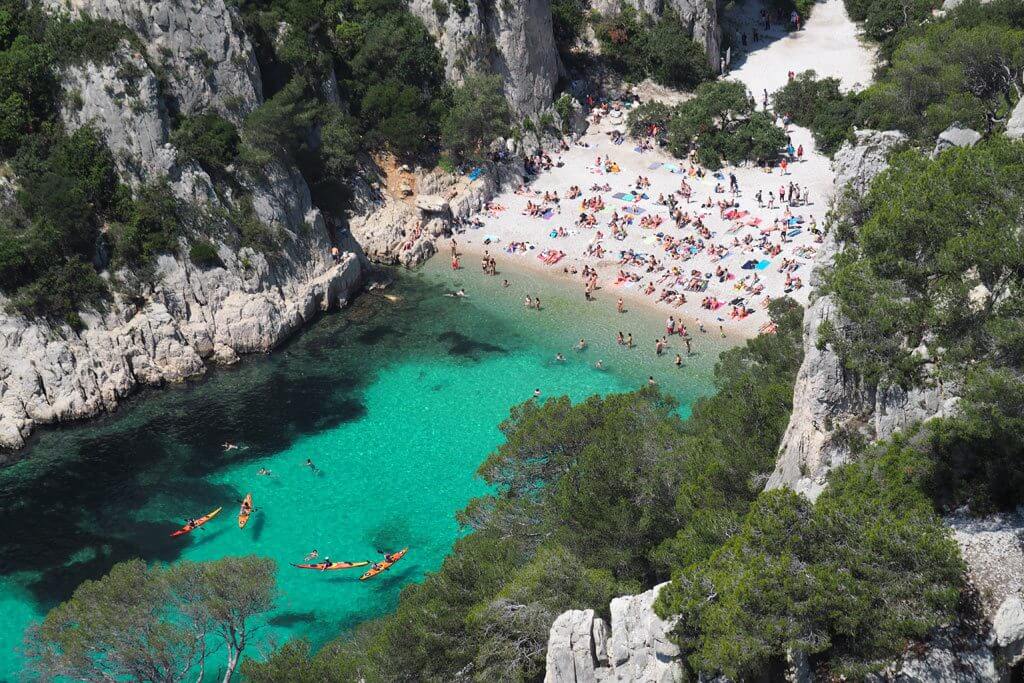
The Calanque d’En-Vau is the most spectacular calanque because of its high cliffs and turquoise waters. Down the Calanque, there’s a pebble beach very popular amongst locals.
Perfectly sheltered, the Calanque d’En-Vau is a paradise for kayaking, which you can rent in the neighbor Calanque of Port-Miou.
La Calanque d’En-Vau is much loved by wild pigs (yes, we said wild pigs), who, just like you, love to swim and sunbathe in this beautiful Calanque.
There are different ways to reach En-Vau on foot; we suggest taking the path from Cassis to the Calanque de Port-Pin and then walking to the Calanque d’En-Vau. It is also possible to get Calanque d’En-Vau by boat.
TIP: The Calanque d’En-Vau is very popular, so we recommend going early to avoid the crowds and not suffer too much from walking in the sun.
Calanque de Port-Pin
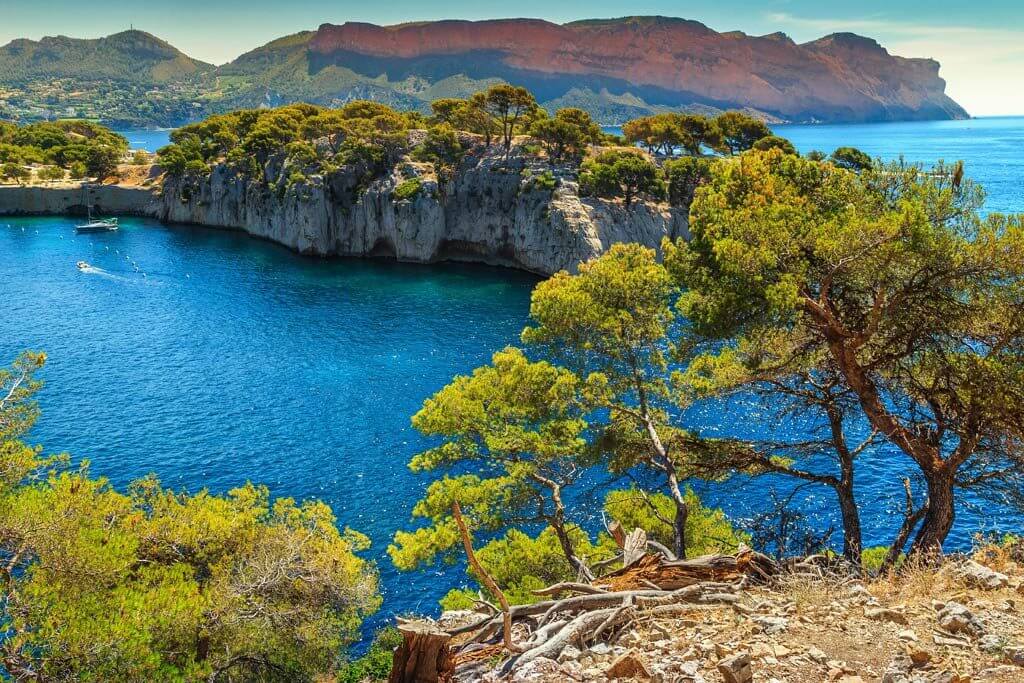
The Calanque de Port-Pin owes its name to the many Aleppo pines that surround the site. This is a pretty place, the most beautiful of Les Calanques de Cassis, with a sand and pebbles beach and a large area with terraces behind the beach.
The path to Port-Pin starts at the car park in Port-Miou. From there, it’s a 2km walk (half an hour) to Port-Pin. Of course, it is also possible to visit this Calanque on a half-day or full-day boat trip.
Calanque de Port-Miou
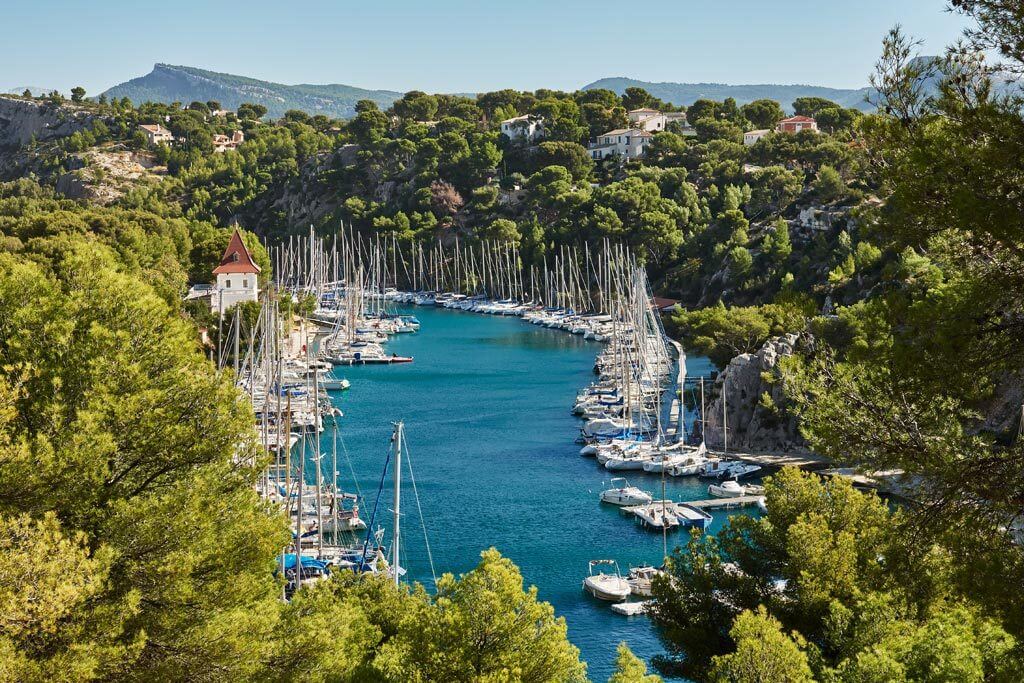
The Calanque de Port-Miou is very close to Cassis. Actually, it’s only a 20-minute walk from Cassis! Two pontoons to access the boats occupy the first part of the Calanque, and after the first kilometer, the Calanque gets wild again.
The cliffs and old hoppers by the water are the remains of the Solvay quarry. The quarry exploited limestone for lime manufacture from 1900 to 1981.
How to Get to the Calanques National Parc
1. Marseille to Calanques National Park
Take the metro to Sainte Marguerite Dromel and get off at Castellane metro station or Rond-Point du Prado metro station.
Place Castellane
When you get out of the metro station, you will find the bus stop on the other side o Avenue du Prado.
- Bus #21 or #21jet will take you to Sugiton (bus stop Luminy PN des Calanques).
- Bus #19 will take you to Callelongue (last stop La Madrague de Montredon). Then take bus #20 to Callelongue.
Rond-point du Prado
- Cross the Boulevard Michelet. Bus #21 or 21jet will take you to Sugiton (bus stop Luminy PN des Calanques).
- Bus #23 will take you to Sormiou (bus stop La Cayole). Then, walk 700 meters along the road until the parking next to the water treatment plant.
- Bus 22 will take you to Morgio (bus stop Les Baumettes). Then, walk 400 meters to reach the Parc des Baumettes.
2. Cassis to Parc National des Calanques
The town center is located a 20-minute walk from the entrance to the Calanques National Park (the Cassis Peninsula and the Calanque de Port-Miou). If you arrive at Cassis by train, bus line M1 connects the train station to downtown.
Apart from Marseille and the picturesque village of Cassis, you can also visit the Château d’If, in the Friuli archipelago. One of the best castles in Southern France, the Château d’If is famous for being one of the settings of the novel The Count of Monte Cristo by Alexandre Dumas. The boats to Château d’If leave from the Port of Marseille regularly – Click here to buy your tickets to Château d’If.
TIP: the boat crossing and the visit to Château d’If are included in the Marseille City Pass! This city pass for one, two, or three days offers free access to museums, ferries, public transport, and much more.
Have you visited the Parc National des Calanques? Which Calanques did you like most?
